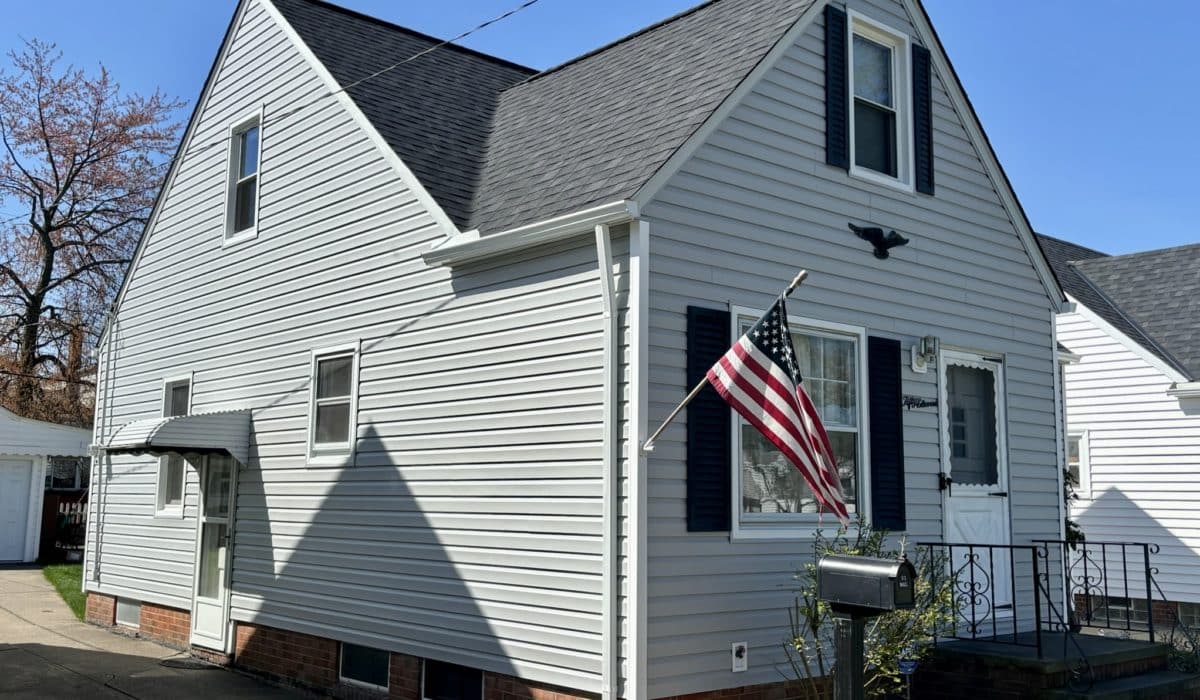- 0 Comment
The Ultimate Guide to Siding Replacement: Enhance Your Home’s Curb Appeal and Protection
When it comes to home improvement, siding replacement often doesn’t get the attention it deserves. However, the impact of new siding on your home’s appearance, energy efficiency, and structural integrity is substantial. In this blog, we’ll explore why siding replacement is a crucial investment, the types of siding available, the process involved, and some tips to ensure you get the best results for your home.
Why Replace Your Siding?
1.Improved Curb Appeal: First impressions matter. New siding can drastically improve the exterior appearance of your home, making it look fresh and well-maintained. Whether you plan to sell your house or simply want to be the envy of the neighborhood, siding replacement is an effective way to boost your home’s aesthetic appeal.
2.Increased Energy Efficiency: Modern siding materials are designed to improve your home’s insulation. This means better temperature regulation, reduced energy consumption, and lower utility bills. Insulated siding options can help keep your home warm in the winter and cool in the summer.
3.Enhanced Protection: Siding acts as a protective barrier against the elements. Over time, old or damaged siding can allow moisture to seep in, leading to mold, mildew, and structural damage. Replacing your siding ensures your home remains protected from weather-related issues.
4.Increased Property Value: Homebuyers appreciate the benefits of new siding. If you’re planning to sell, this upgrade can increase your property’s market value and appeal to potential buyers.
Types of Siding
1.Vinyl Siding: This is the most popular siding material due to its affordability, low maintenance, and versatility. Vinyl siding comes in a variety of colors and styles, making it easy to find an option that complements your home’s design.
2.Fiber Cement Siding: Known for its durability and resistance to fire, insects, and rot, fiber cement siding is an excellent choice for homeowners looking for a long-lasting solution. It can mimic the appearance of wood, stucco, or masonry, offering a high-end look without the associated maintenance.
3.Wood Siding: For those who love a natural, classic look, wood siding is a timeless option. While it requires more maintenance to prevent damage from insects and moisture, the charm and warmth of wood siding are unmatched.
4.Engineered Wood Siding: This is a more durable and cost-effective alternative to natural wood siding. Engineered wood is treated to resist termites and fungal decay, making it a practical choice for those who want the look of wood without the upkeep.
5.Metal Siding: Aluminum and steel siding are durable and low-maintenance options, often used for their modern and sleek appearance. They are resistant to fire, insects, and rot, making them suitable for various climates.
The Siding Replacement Process
1.Inspection and Preparation: The first step is to inspect your current siding and the underlying structure. Any damaged areas need to be repaired before new siding is installed.
2.Removal of Old Siding: The existing siding is removed, and the area is prepared for the new material. This may involve adding or replacing insulation and ensuring the surface is smooth and ready for installation.
3.Installation of New Siding: The new siding is installed according to manufacturer specifications. This involves careful measurement, cutting, and securing the panels to ensure a tight fit and a seamless appearance.
4.Finishing Touches: Once the siding is in place, trim and finishing elements are added to complete the look. This includes sealing edges, caulking gaps, and painting or staining (if necessary).
Tips for a Successful Siding Replacement
1.Choose the Right Material: Consider your budget, climate, and maintenance preferences when selecting siding material. Each type has its own set of advantages and drawbacks.
2.Hire a Professional: Siding replacement is a complex task that requires skill and experience. Hiring a reputable contractor ensures the job is done correctly and efficiently. Look for contractors with good reviews and proper licensing.
3.Consider Insulation: Upgrading your insulation during the siding replacement can enhance energy efficiency and comfort. Ask your contractor about the best options for your home.
4.Plan for Maintenance: Even low-maintenance siding requires some upkeep. Regular cleaning and periodic inspections can extend the life of your new siding and keep it looking great.
5.Check for Warranties: Many siding materials come with manufacturer warranties. Ensure you understand the terms and conditions, and keep all documentation for future reference.
Replacing your siding is a significant investment that offers numerous benefits. By choosing the right materials and hiring experienced professionals, you can enhance your home’s curb appeal, improve its energy efficiency, and protect it from the elements for years to come.

